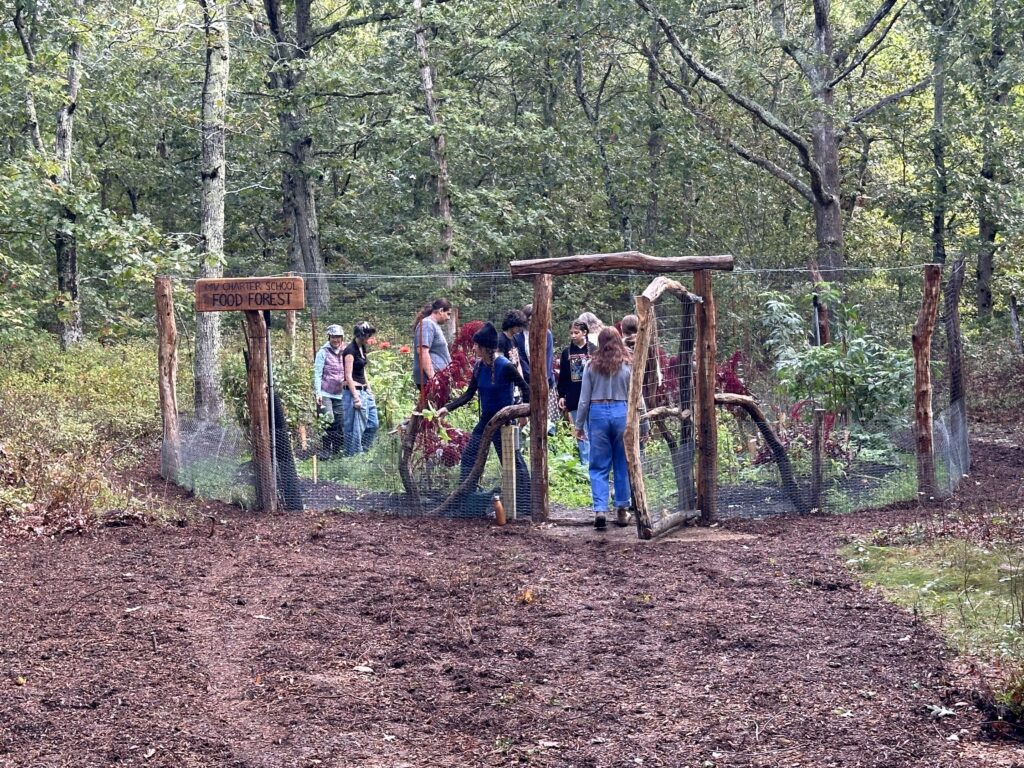
Perennial food forests provide a source of nourishment from April through November here in zone 7a on Martha’s Vineyard. Beginning with spring greens, perennial scallions, asparagus, and early season berries, a diversified foodscape keeps growing right up to a frigid arctic blast.
Three key features differentiate permaculture-based edible gardens from traditional vegetable gardens: 1) perennial crops grow larger each year and can be divided to make new gardens; 2) food forest plants need less irrigation and fertilizer because the soil is covered with biologically active mulch such as decomposing leaves, nutrient rich compost, or seaweed; 3) the soil supporting plant growth is not tilled and thus microbial activity does the work of providing soil fertility, which reduces the chance of crop failure. In contrast, annual kitchen gardens require new plants each spring needing more water and nutrient input and subsequently carry a larger carbon footprint than established food forests.
The goal of this project is to create an Edible Food Forest Prototype for enjoyment, education, and inspiration. The garden will be used as a classroom for students, community members, and island organizations who will benefit by learning to create sustainable food forest gardens in their own locations.